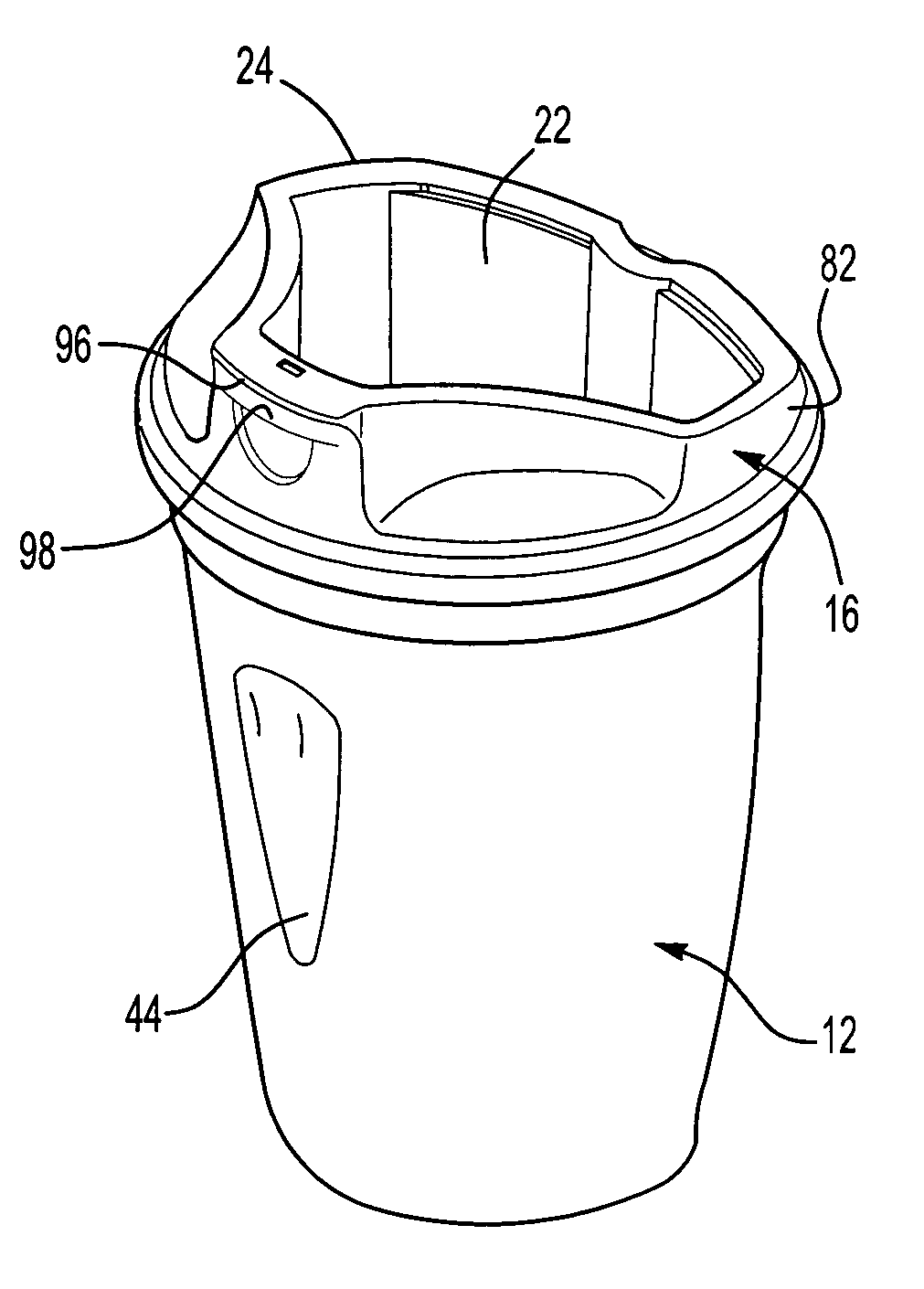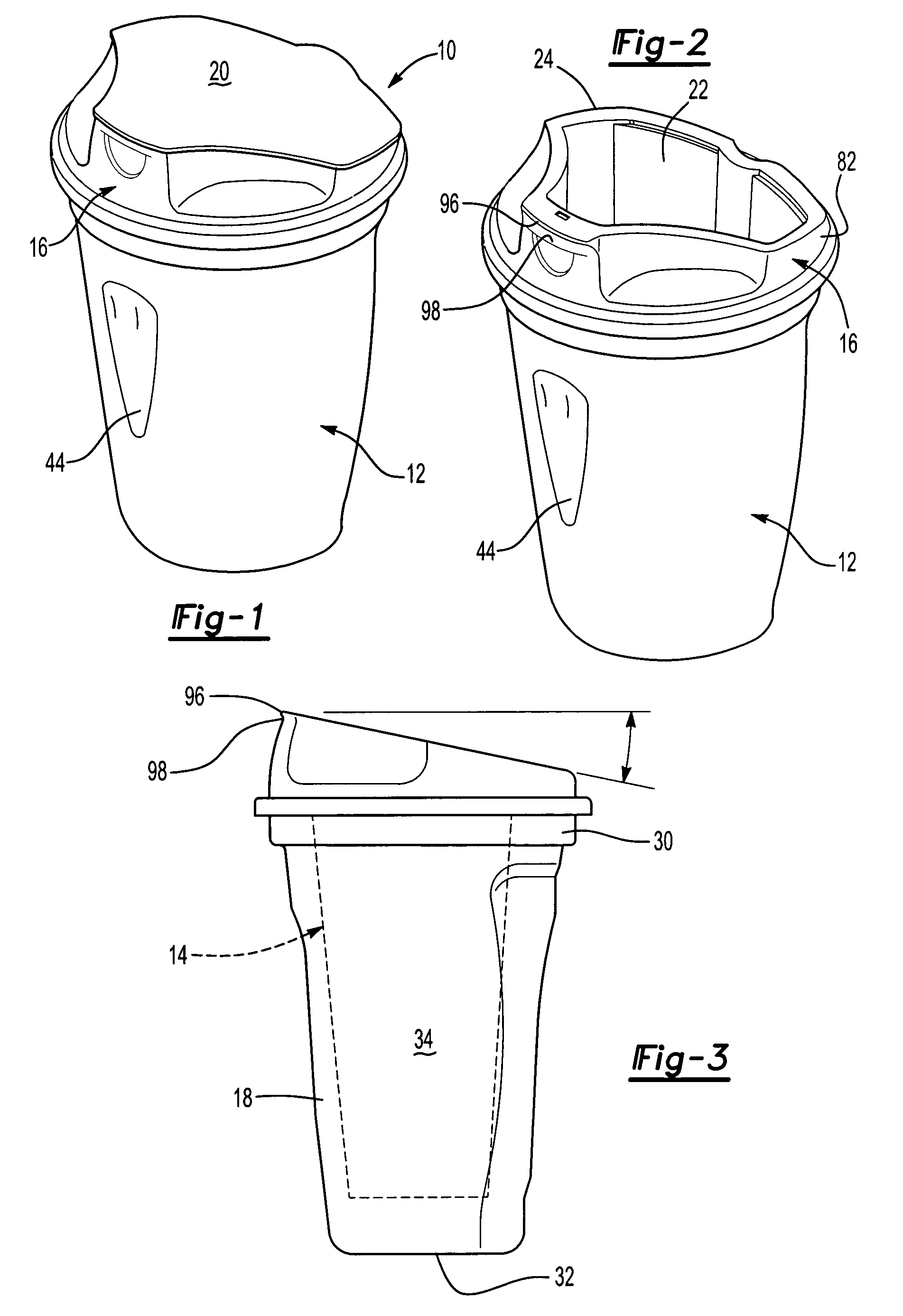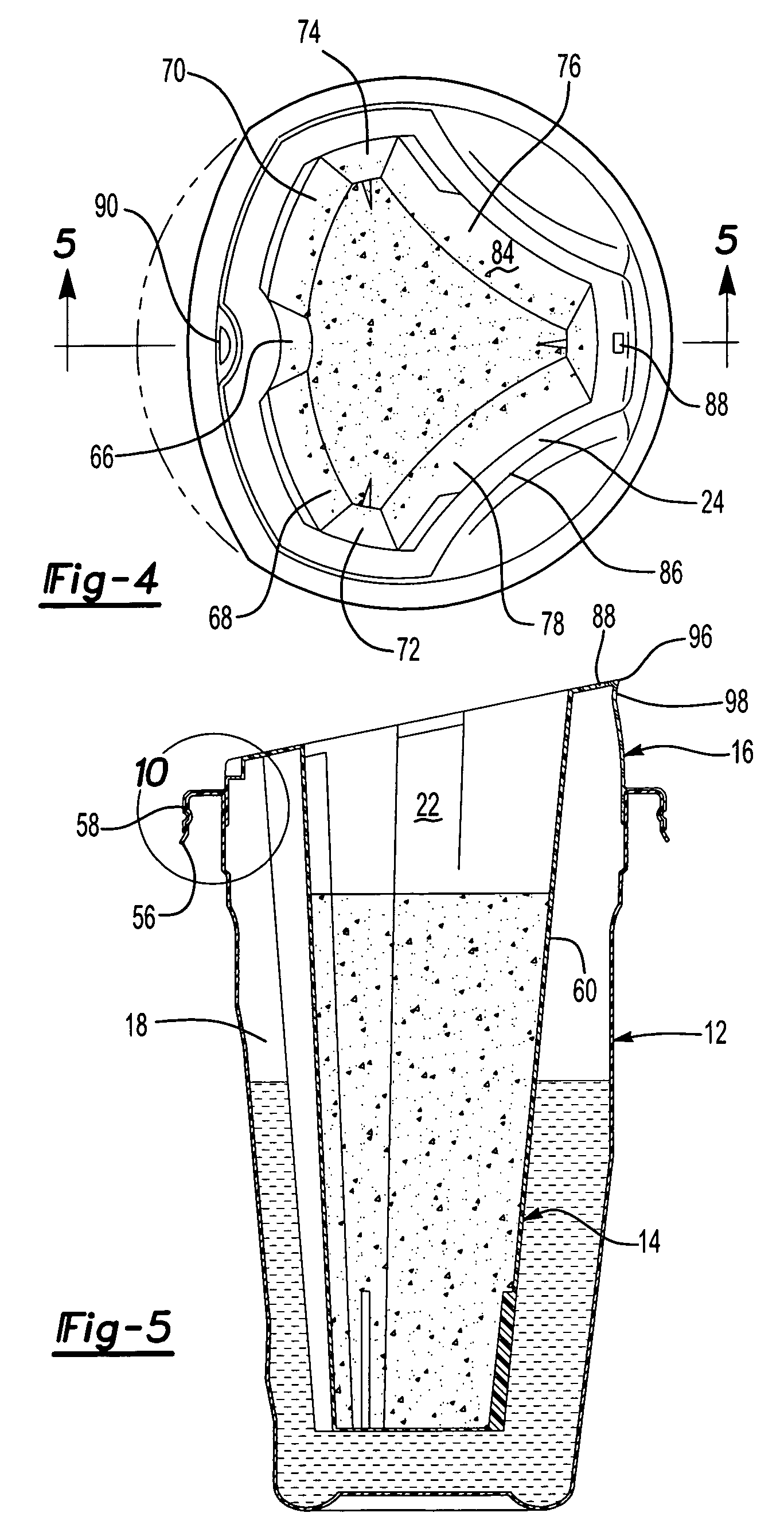Single handed container for mixing foods
a single-handed, food technology, applied in the direction of packaging foodstuffs, containers for heating food, packaged goods, etc., to achieve the effect of reducing liquid spills
- Summary
- Abstract
- Description
- Claims
- Application Information
AI Technical Summary
Benefits of technology
Problems solved by technology
Method used
Image
Examples
Embodiment Construction
[0037]With reference to FIG. 1, the single handed container for mixing foods of the present invention is shown generally at 10. As illustrated, the container 10 has an outer cup 12 and an inner cup 14, see FIG. 3. The inner cup 14 fits into the outer cup 12 and includes a lid 16 that seals the inner cup 14 to the outer cup 12. In this embodiment, the lid 16 is integral with the inner cup 14. As will be described in more detail below, the inner cup 14 fits within the outer cup 12 to form a space 18 between the inner 14 and outer 12 cup; see FIGS. 3 and 5. In the preferred embodiment, the inner cup 14, outer cup 12 and lid 16 are made of polypropylene, but numerous other materials could be used, such as paper, Styrofoam, glass, etc.
[0038]In the disclosed invention, a removable seal 20 is fixed to the inner cup 14. As illustrated in FIG. 2, the removable seal 20 seals the cavity 22 of the inner cup 14 and in particular its contents and the dispensing opening 88 and vent hole 90. In the...
PUM
 Login to View More
Login to View More Abstract
Description
Claims
Application Information
 Login to View More
Login to View More - R&D
- Intellectual Property
- Life Sciences
- Materials
- Tech Scout
- Unparalleled Data Quality
- Higher Quality Content
- 60% Fewer Hallucinations
Browse by: Latest US Patents, China's latest patents, Technical Efficacy Thesaurus, Application Domain, Technology Topic, Popular Technical Reports.
© 2025 PatSnap. All rights reserved.Legal|Privacy policy|Modern Slavery Act Transparency Statement|Sitemap|About US| Contact US: help@patsnap.com



